WPC decking boards
for a long-lasting and decorative outdoor space
Modern WPC decking boards are the durable alternative to wooden decking boards. They withstand changing weather conditions outdoors and require little maintenance, so you can spend more time enjoying your space. The splinter-free surface of the WPC decking makes for a particularly pleasant walking experience. You can easily install WPC decking boards on your terrace with hidden clips. Buy WPC decking boards at low prices at planeo. Order free WPC decking board samples!
1-36 of 68
-
Up to 19 %#1 Topseller
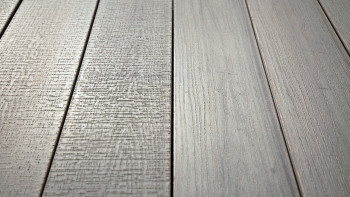
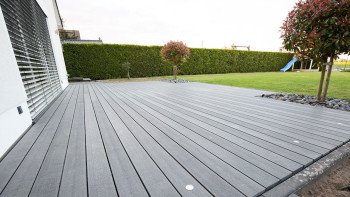 Sampleshipping planeo TitanWood - solid plank wood structure light greyHigh-density WPC planks for robust and durable terracesfrom €15.90 /lfmIncl. 19% Tax
Sampleshipping planeo TitanWood - solid plank wood structure light greyHigh-density WPC planks for robust and durable terracesfrom €15.90 /lfmIncl. 19% TaxConfigure now
Available in different versions Different versions
-
Up to 19 %#2 Topseller
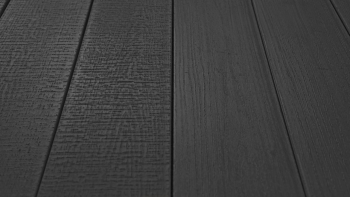
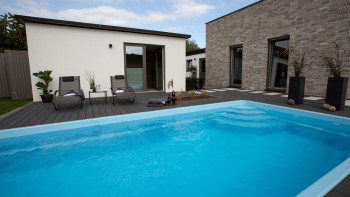 Sampleshipping planeo TitanWood - solid plank wood structure dark greyHigh-density WPC planks for robust and durable terracesfrom €15.90 /lfmIncl. 19% Tax
Sampleshipping planeo TitanWood - solid plank wood structure dark greyHigh-density WPC planks for robust and durable terracesfrom €15.90 /lfmIncl. 19% TaxConfigure now
Available in different versions Different versions
-
Up to 54 %#3 Topseller
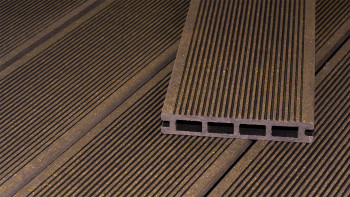
 Sampleshipping planeo ECO-Line WPC decking board hollow chamber dark brown - smooth/groovedRobust & high-density WPC decking boards with a splinter-free surface for low-maintenance everyday usefrom €6.10 /lfmIncl. 19% Tax
Sampleshipping planeo ECO-Line WPC decking board hollow chamber dark brown - smooth/groovedRobust & high-density WPC decking boards with a splinter-free surface for low-maintenance everyday usefrom €6.10 /lfmIncl. 19% TaxConfigure now
Available in different versions Different versions
-
Up to 54 %Made In Europe
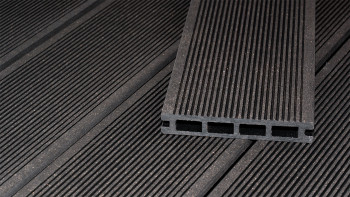
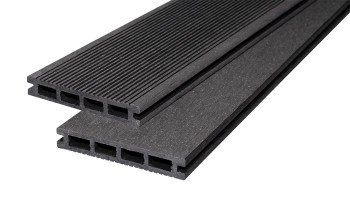 Sampleshipping planeo ECO-Line WPC decking board hollow chamber dark grey - smooth/groovedRobust & high-density WPC decking boards with a splinter-free surface for low-maintenance everyday usefrom €6.10 /lfmIncl. 19% Tax
Sampleshipping planeo ECO-Line WPC decking board hollow chamber dark grey - smooth/groovedRobust & high-density WPC decking boards with a splinter-free surface for low-maintenance everyday usefrom €6.10 /lfmIncl. 19% TaxConfigure now
Available in different versions Different versions
-
Up to 46 %Made In Europe
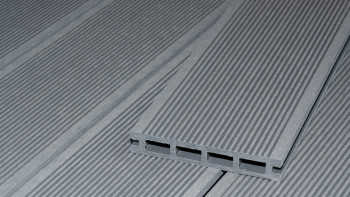
 Sampleshipping planeo ECO-Line WPC decking board hollow chamber light grey - smooth/groovedRobust & high-density WPC decking boards with a splinter-free surface for low-maintenance everyday usefrom €7.15 /lfmIncl. 19% Tax
Sampleshipping planeo ECO-Line WPC decking board hollow chamber light grey - smooth/groovedRobust & high-density WPC decking boards with a splinter-free surface for low-maintenance everyday usefrom €7.15 /lfmIncl. 19% TaxConfigure now
Available in different versions Different versions
-
Up to 37 %Made In Europe
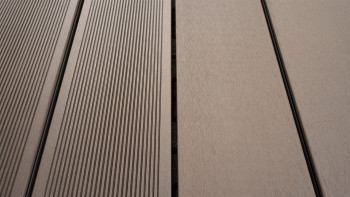
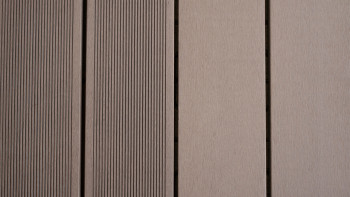 Sampleshipping planeo ECO-Line WPC decking board solid wenge - smooth/groovedRobust & high density WPC decking boardfrom €9.80 /lfmIncl. 19% Tax
Sampleshipping planeo ECO-Line WPC decking board solid wenge - smooth/groovedRobust & high density WPC decking boardfrom €9.80 /lfmIncl. 19% TaxConfigure now
Available in different versions Different versions
-
Up to 47 %Authentic surface
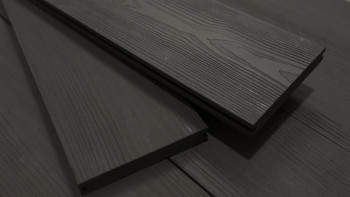
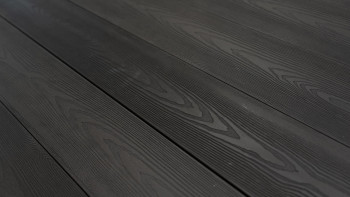 Sampleshipping planeo BPC oak grove - solid plank carbon oak wood structureAuthentic and non-slip plank with a textured surface and pleasant feelfrom €10.95 /lfmIncl. 19% Tax
Sampleshipping planeo BPC oak grove - solid plank carbon oak wood structureAuthentic and non-slip plank with a textured surface and pleasant feelfrom €10.95 /lfmIncl. 19% TaxConfigure now
Available in different versions Different versions
-
Up to 35 %360° sheathed protection
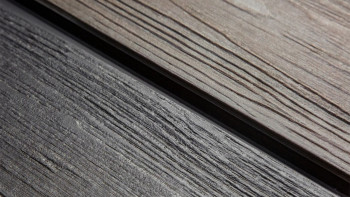
 Sampleshipping planeo CoEx-Line BPC solid plank walnut/black-brown - wood structureFully encased Co-Ex 360° protection for long service lifefrom €12.05 /lfmIncl. 19% Tax
Sampleshipping planeo CoEx-Line BPC solid plank walnut/black-brown - wood structureFully encased Co-Ex 360° protection for long service lifefrom €12.05 /lfmIncl. 19% TaxConfigure now
Available in different versions Different versions
-
Up to 31 %360° sheathed protection
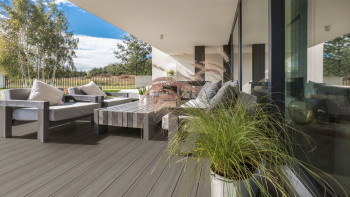
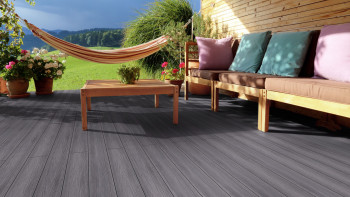 Sampleshipping planeo CoEx-Line BPC solid plank stone grey/graphite - wood structureFully encased Co-Ex 360° protection for long service lifefrom €12.05 /lfmIncl. 19% Tax
Sampleshipping planeo CoEx-Line BPC solid plank stone grey/graphite - wood structureFully encased Co-Ex 360° protection for long service lifefrom €12.05 /lfmIncl. 19% TaxConfigure now
Available in different versions Different versions
-
Up to 37 %Authentic surface
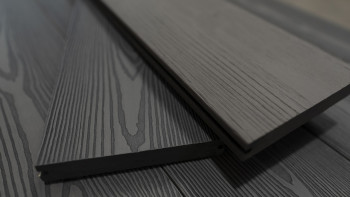
 Sampleshipping planeo BPC Oak Grove - solid plank grey oak wood textureAuthentic and non-slip plank with a textured surface and pleasant feelfrom €13.15 /lfmIncl. 19% Tax
Sampleshipping planeo BPC Oak Grove - solid plank grey oak wood textureAuthentic and non-slip plank with a textured surface and pleasant feelfrom €13.15 /lfmIncl. 19% TaxConfigure now
Available in different versions Different versions
-
Up to 47 %Authentic surface
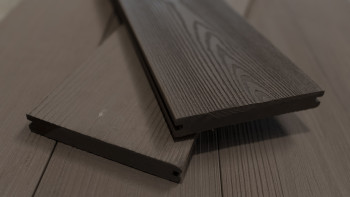
 Sampleshipping planeo BPC oak grove - solid plank bog oak wood structureAuthentic and non-slip plank with a textured surface and pleasant feelfrom €13.15 /lfmIncl. 19% Tax
Sampleshipping planeo BPC oak grove - solid plank bog oak wood structureAuthentic and non-slip plank with a textured surface and pleasant feelfrom €13.15 /lfmIncl. 19% TaxConfigure now
Available in different versions Different versions
-
Up to 37 %Authentic surface
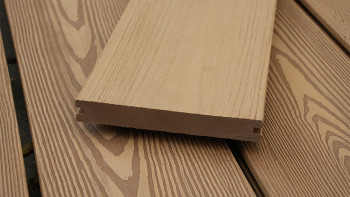
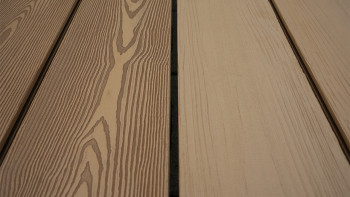 planeo BPC oak grove - solid plank sinai oak wood structureAuthentic and non-slip plank with a textured surface and pleasant feelfrom €13.15 /lfmIncl. 19% Tax
planeo BPC oak grove - solid plank sinai oak wood structureAuthentic and non-slip plank with a textured surface and pleasant feelfrom €13.15 /lfmIncl. 19% TaxConfigure now
Available in different versions Different versions
-
Up to 37 %Authentic surface
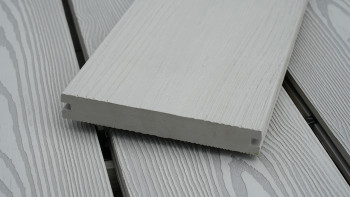
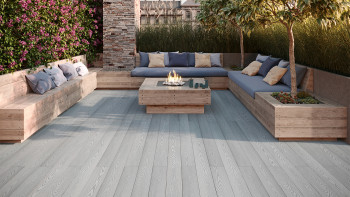 Sampleshipping planeo BPC Oak Grove - solid plank Silbereiche wood structureAuthentic and non-slip plank with a textured surface and pleasant feelfrom €13.15 /lfmIncl. 19% Tax
Sampleshipping planeo BPC Oak Grove - solid plank Silbereiche wood structureAuthentic and non-slip plank with a textured surface and pleasant feelfrom €13.15 /lfmIncl. 19% TaxConfigure now
Available in different versions Different versions
-
Up to 35 %360° sheathed protection
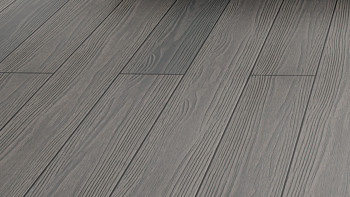
 Sampleshipping planeo Autentica solid plank Co-Ex basalt grey - wood textureModern non-slip decking board incl. Co-Ex 360° protectionfrom €14.90 /lfmIncl. 19% Tax
Sampleshipping planeo Autentica solid plank Co-Ex basalt grey - wood textureModern non-slip decking board incl. Co-Ex 360° protectionfrom €14.90 /lfmIncl. 19% TaxConfigure now
Available in different versions Different versions
-
Up to 23 %Extremely durable
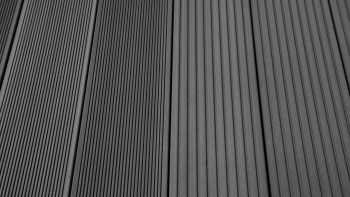
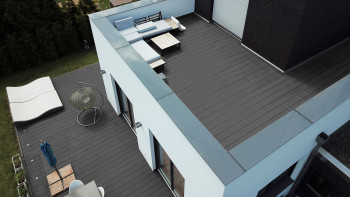 Sampleshipping planeo TitanWood - solid plank dark grey grooved/groovedHigh-density WPC planks for robust and durable terracesfrom €15.25 /lfmIncl. 19% Tax
Sampleshipping planeo TitanWood - solid plank dark grey grooved/groovedHigh-density WPC planks for robust and durable terracesfrom €15.25 /lfmIncl. 19% TaxConfigure now
Available in different versions Different versions
-
Up to 23 %Extremely durable
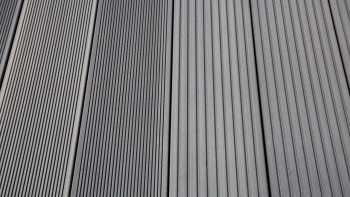
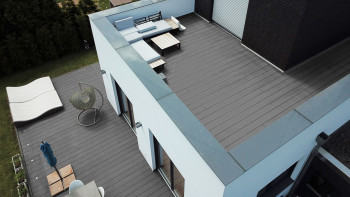 Sampleshipping planeo TitanWood - solid plank grey grooved/groovedHigh-density WPC planks for robust and durable terracesfrom €15.25 /lfmIncl. 19% Tax
Sampleshipping planeo TitanWood - solid plank grey grooved/groovedHigh-density WPC planks for robust and durable terracesfrom €15.25 /lfmIncl. 19% TaxConfigure now
Available in different versions Different versions
-
Up to 23 %Extremely durable
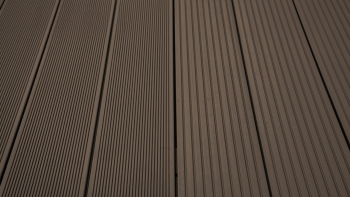
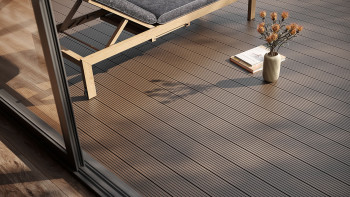 Sampleshipping planeo TitanWood - solid plank dark brown grooved/groovedHigh-density WPC planks for robust and durable terracesfrom €15.25 /lfmIncl. 19% Tax
Sampleshipping planeo TitanWood - solid plank dark brown grooved/groovedHigh-density WPC planks for robust and durable terracesfrom €15.25 /lfmIncl. 19% TaxConfigure now
Available in different versions Different versions
-
Up to 19 %Extremely durable
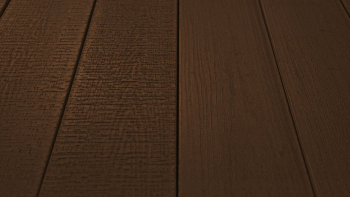
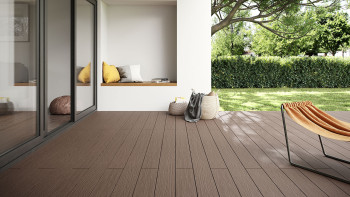 Sampleshipping planeo TitanWood - solid plank wood structure dark brownHigh-density WPC planks for robust and durable terracesfrom €15.90 /lfmIncl. 19% Tax
Sampleshipping planeo TitanWood - solid plank wood structure dark brownHigh-density WPC planks for robust and durable terracesfrom €15.90 /lfmIncl. 19% TaxConfigure now
Available in different versions Different versions
-
Up to 22 %Extremely durable
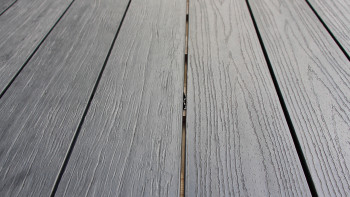
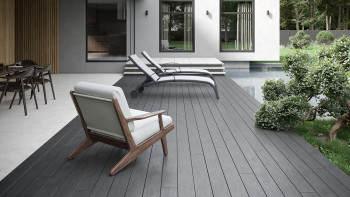 Sampleshipping planeo TitanWood - solid plank dark grey antique aged/brushedHigh-density WPC planks for robust and durable terracesfrom €16.35 /lfmIncl. 19% Tax
Sampleshipping planeo TitanWood - solid plank dark grey antique aged/brushedHigh-density WPC planks for robust and durable terracesfrom €16.35 /lfmIncl. 19% TaxConfigure now
Available in different versions Different versions
-
Up to 27 %360° sheathed protection
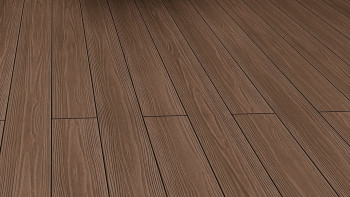
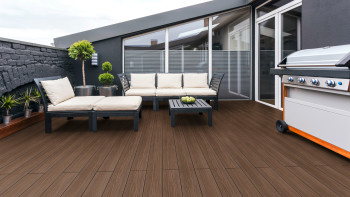 Sampleshipping planeo Autentica solid plank Co-Ex Cumaru - wood structureModern non-slip decking board incl. Co-Ex 360° protectionfrom €17.55 /lfmIncl. 19% Tax
Sampleshipping planeo Autentica solid plank Co-Ex Cumaru - wood structureModern non-slip decking board incl. Co-Ex 360° protectionfrom €17.55 /lfmIncl. 19% TaxConfigure now
Available in different versions Different versions
-
Up to 27 %360° sheathed protection
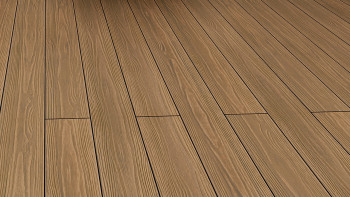
 Sampleshipping planeo Autentica solid plank Co-Ex Garapa - wood textureModern non-slip decking board incl. Co-Ex 360° protectionfrom €17.55 /lfmIncl. 19% Tax
Sampleshipping planeo Autentica solid plank Co-Ex Garapa - wood textureModern non-slip decking board incl. Co-Ex 360° protectionfrom €17.55 /lfmIncl. 19% TaxConfigure now
Available in different versions Different versions
-
-19 %Extremely durable
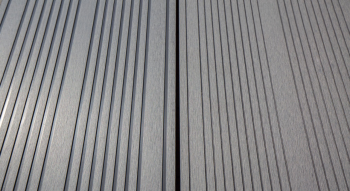
 Sampleshipping planeo TitanWood - XL hollow core plank 4m light greyHigh-density WPC planks for robust and durable terracesSold out soonIncl. 19% Tax 1 Packet: 4,00 lfm for €74.60
Sampleshipping planeo TitanWood - XL hollow core plank 4m light greyHigh-density WPC planks for robust and durable terracesSold out soonIncl. 19% Tax 1 Packet: 4,00 lfm for €74.60UVP €23.05 /lfm
€18.65 /lfmDelivery time: 13 Days
-
-22 %Kratzunempfindlich
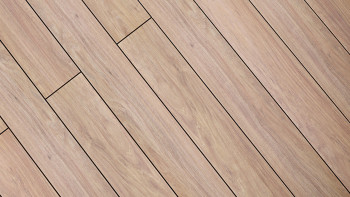
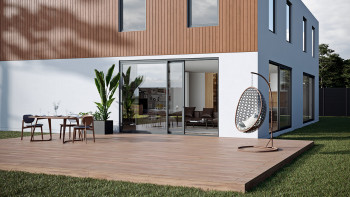 Sampleshipping planeo TitanBoard HPL- decking board BankiraiExtremely robust and water-resistant decking board made of modern HPLIncl. 19% Tax 1 Packet: 3,05 lfm for €60.24
Sampleshipping planeo TitanBoard HPL- decking board BankiraiExtremely robust and water-resistant decking board made of modern HPLIncl. 19% Tax 1 Packet: 3,05 lfm for €60.24UVP €25.31 /lfm
€19.75 /lfmDelivery time: 13 Days
-
-22 %Kratzunempfindlich
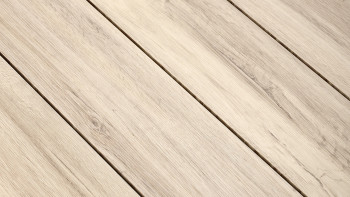
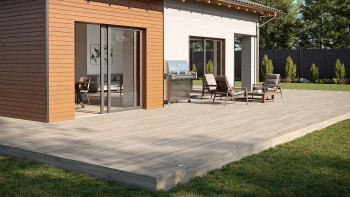 Sampleshipping planeo TitanBoard HPL decking board cracked oak lightExtremely robust and water-resistant decking board made of modern HPLIncl. 19% Tax 1 Packet: 3,05 lfm for €60.24
Sampleshipping planeo TitanBoard HPL decking board cracked oak lightExtremely robust and water-resistant decking board made of modern HPLIncl. 19% Tax 1 Packet: 3,05 lfm for €60.24UVP €25.31 /lfm
€19.75 /lfmDelivery time: 38 Days
-
-22 %Kratzunempfindlich
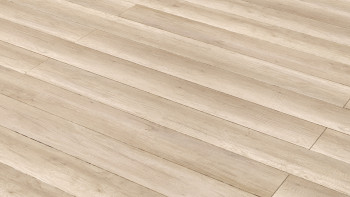
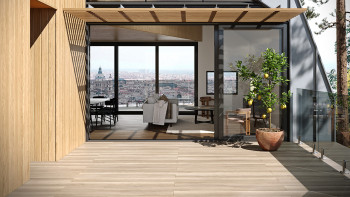 Sampleshipping planeo TitanBoard HPL decking board oak baroqueExtremely robust and water-resistant decking board made of modern HPLIncl. 19% Tax 1 Packet: 3,05 lfm for €60.24
Sampleshipping planeo TitanBoard HPL decking board oak baroqueExtremely robust and water-resistant decking board made of modern HPLIncl. 19% Tax 1 Packet: 3,05 lfm for €60.24UVP €25.31 /lfm
€19.75 /lfmDelivery time: 38 Days
-
-18 %Kratzunempfindlich
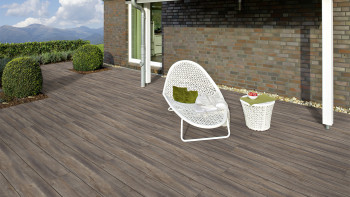 Sampleshipping planeo TitanBoard HPL - Driftwood oak decking boardBreak and impact resistant HPL planks with high UV protection and exceptional decors - water resistantSold out soonIncl. 19% Tax 1 Packet: 2,40 lfm for €47.40
Sampleshipping planeo TitanBoard HPL - Driftwood oak decking boardBreak and impact resistant HPL planks with high UV protection and exceptional decors - water resistantSold out soonIncl. 19% Tax 1 Packet: 2,40 lfm for €47.40UVP €24.15 /lfm
€19.75 /lfmDelivery time: 13 Days
-
-18 %Kratzunempfindlich
 Sampleshipping planeo TitanBoard HPL - Oak Dusty decking boardBreak and impact resistant HPL planks with high UV protection and exceptional decors - water resistantSold out soonIncl. 19% Tax 1 Packet: 2,40 lfm for €47.40
Sampleshipping planeo TitanBoard HPL - Oak Dusty decking boardBreak and impact resistant HPL planks with high UV protection and exceptional decors - water resistantSold out soonIncl. 19% Tax 1 Packet: 2,40 lfm for €47.40UVP €24.15 /lfm
€19.75 /lfmDelivery time: 13 Days
-
-22 %Kratzunempfindlich
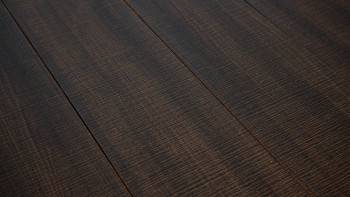
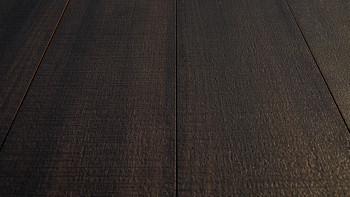 Sampleshipping planeo TitanBoard HPL decking board Black AleExtremely robust and water-resistant decking board made of modern HPLSold out soonIncl. 19% Tax 1 Packet: 3,05 lfm for €60.24
Sampleshipping planeo TitanBoard HPL decking board Black AleExtremely robust and water-resistant decking board made of modern HPLSold out soonIncl. 19% Tax 1 Packet: 3,05 lfm for €60.24UVP €25.25 /lfm
€19.75 /lfmDelivery time: 13 Days
-
-22 %Kratzunempfindlich
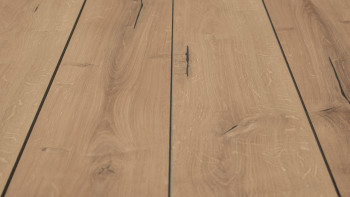
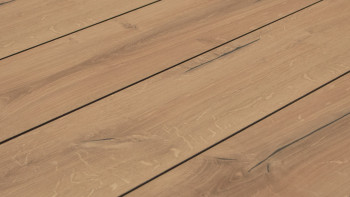 Sampleshipping planeo TitanBoard HPL decking board oak natureExtremely robust and water-resistant decking board made of modern HPLIncl. 19% Tax 1 Packet: 9,15 lfm for €180.71
Sampleshipping planeo TitanBoard HPL decking board oak natureExtremely robust and water-resistant decking board made of modern HPLIncl. 19% Tax 1 Packet: 9,15 lfm for €180.71UVP €25.25 /lfm
€19.75 /lfmDelivery time: 13 Days
-
-22 %Kratzunempfindlich
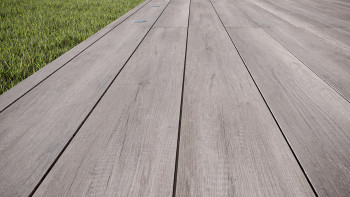
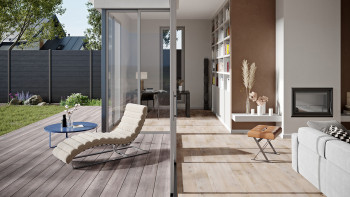 Sampleshipping planeo TitanBoard HPL decking board cracked oak darkExtremely robust and water-resistant decking board made of modern HPLIncl. 19% Tax 1 Packet: 3,05 lfm for €60.24
Sampleshipping planeo TitanBoard HPL decking board cracked oak darkExtremely robust and water-resistant decking board made of modern HPLIncl. 19% Tax 1 Packet: 3,05 lfm for €60.24UVP €25.31 /lfm
€19.75 /lfmDelivery time: 13 Days
-
-22 %Kratzunempfindlich
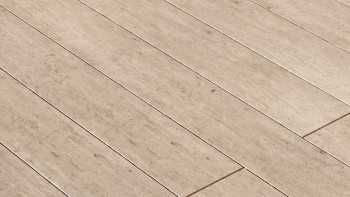
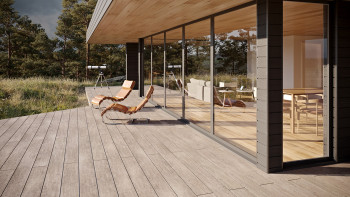 Sampleshipping planeo TitanBoard HPL- decking board concrete loftExtremely robust and water-resistant decking board made of modern HPLIncl. 19% Tax 1 Packet: 3,05 lfm for €60.24
Sampleshipping planeo TitanBoard HPL- decking board concrete loftExtremely robust and water-resistant decking board made of modern HPLIncl. 19% Tax 1 Packet: 3,05 lfm for €60.24UVP €25.31 /lfm
€19.75 /lfmDelivery time: 38 Days
-
-22 %Kratzunempfindlich
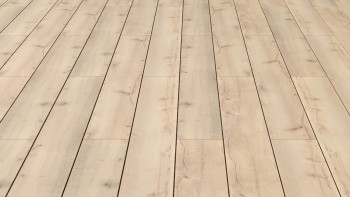
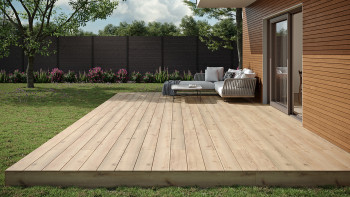 Sampleshipping planeo TitanBoard HPL decking board light oakExtremely robust and water-resistant decking board made of modern HPLIncl. 19% Tax 1 Packet: 3,05 lfm for €60.24
Sampleshipping planeo TitanBoard HPL decking board light oakExtremely robust and water-resistant decking board made of modern HPLIncl. 19% Tax 1 Packet: 3,05 lfm for €60.24UVP €25.31 /lfm
€19.75 /lfmDelivery time: 38 Days
-
-18 %Kratzunempfindlich
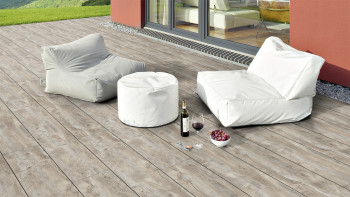 Sampleshipping planeo TitanBoard HPL - decking board oak creamBreak and impact resistant HPL planks with high UV protection and exceptional decors - water resistantSold out soonIncl. 19% Tax 1 Packet: 2,40 lfm for €47.40
Sampleshipping planeo TitanBoard HPL - decking board oak creamBreak and impact resistant HPL planks with high UV protection and exceptional decors - water resistantSold out soonIncl. 19% Tax 1 Packet: 2,40 lfm for €47.40UVP €24.15 /lfm
€19.75 /lfmDelivery time: 13 Days
-
-18 %Kratzunempfindlich

 Sampleshipping planeo TitanBoard HPL - Tropica oak decking boardBreak and impact resistant HPL planks with high UV protection and exceptional decors - water resistantSold out soonIncl. 19% Tax 1 Packet: 2,40 lfm for €47.40
Sampleshipping planeo TitanBoard HPL - Tropica oak decking boardBreak and impact resistant HPL planks with high UV protection and exceptional decors - water resistantSold out soonIncl. 19% Tax 1 Packet: 2,40 lfm for €47.40UVP €24.15 /lfm
€19.75 /lfmDelivery time: 13 Days
-
-18 %Kratzunempfindlich
 Sampleshipping planeo TitanBoard HPL - Grey Stone decking boardBreak and impact resistant HPL planks with high UV protection and exceptional decors - water resistantSold out soonIncl. 19% Tax 1 Packet: 2,40 lfm for €47.40
Sampleshipping planeo TitanBoard HPL - Grey Stone decking boardBreak and impact resistant HPL planks with high UV protection and exceptional decors - water resistantSold out soonIncl. 19% Tax 1 Packet: 2,40 lfm for €47.40UVP €24.15 /lfm
€19.75 /lfmDelivery time: 13 Days
-
Up to 16 %
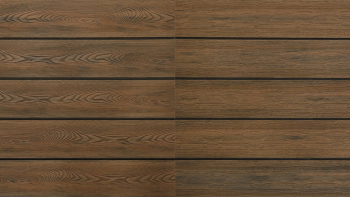
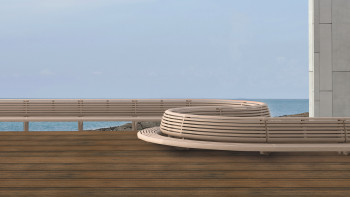 Sampleshipping planeo WPC decking board solid thermo oak - structured/brushedAuthentic and robust WPC decking boards with a pleasant feelfrom €20.80 /lfmIncl. 19% Tax
Sampleshipping planeo WPC decking board solid thermo oak - structured/brushedAuthentic and robust WPC decking boards with a pleasant feelfrom €20.80 /lfmIncl. 19% TaxConfigure now
Available in different versions Different versions
WPC decking is made from plastic and wood
Modern WPC boards have firmly established themselves on the flooring market as a popular alternative to wooden boards. WPC stands for wood polymer composite and combines the high-quality properties of wood and plastics. Wood fibre is the main component in WPC, so the decking boards have a natural look that comes very close to wood as a building material. The plastic content in the WPC planks ensures robust and low-maintenance properties that come in very handy when setting up, using and maintaining the WPC panels.
In the case of wooden and plastic floorboards, a distinction is made between solid and hollowcoreplanks. WPC hollowcore is lighter, and costs less to manufacture, and is therefore cheaper than solid WPC. Solid boards do however offer advantages in water absorption, durability and dimensional stability.
Laying WPC decking boards: what should you bear in mind?
WPC hollowcore planks should always be installed with a 1.5-2% slope, which ensures drainage. If it is known in advance that the WPC boards will be exposed to increased moisture, it is recommended to use solid WPC boards for the terrace.
When preparing the WPC substructure, it is essential to follow the instructions in the enclosed manual. The spacing of the support points of the boards is particularly important. The material properties of WPC decking are significantly influenced by the proportion of wood and the type of plastic used. For this reason, only the manufacturer usually knows the ideal dimensions for the spacing of the support points of the decking boards of the WPC substructure.
There are also some design choices to make: grooved surfaces are mainly used for aesthetic reasons; smooth surfaces favour drainage. We offer a variety of designs and are happy to advise you!
Buy WPC decking boards at great prices from planeo
Thanks to many years of optimisation processes, the WPC planks from planeo are not only particularly water-repellent and barefoot-friendly but also very robust and durable. It does not matter whether you prefer solid or hollowcore planks: both versions are available from planeo in various high-quality designs. The ultra-high density TitanWood WPC planks from planeo meet the highest standards and are more robust and durable than conventional WPC decking planks. Extremely moisture-resistant and impact-resistant, TitanWood decking boards offer extra water and weather resistance. In addition, these strong WPC planks are splinter-free, slip-resistant, environmentally friendly and low-maintenance. TitanWood WPC is 2.5 times more resilient than the values specified by the European standard for composite materials such as WPC planks.
At planeo you will find high-quality WPC decking boards at affordable prices. Order up to seven samples of WPC decking boards free of charge to your home now.
Our services
At planeo you will receive comprehensive advice and support. Take advantage of our comprehensive service :
- FREE order of up to 7 samples
- FREE storage for up to 3 months
- Professional expert advice until 10 p.m.
We are happy to support you with your projects – you will find what you are looking for in our online shop!
The 4 most frequently asked questions about Decking boards
It depends on what is important to you. Wooden decking is 100% natural, looks warm and inviting and is ideal for nature lovers. Weathering, cracks or splinters can be an issue, as can warping. Wooden decks can also become very slippery when wet, especially when a green coating has formed. Therefore, your wooden deck requires regular maintenance to limit any natural weathering. Read more about the different woods for decking material.
WPC decks make for more modern patios. Even though the plank structure is similar to that of wooden decking, WPC planks are characterised by a high degree of uniformity. Neither splinters nor cracks are to be expected. If you want solid, good-looking decking boards that require little maintenance, there’s nothing like WPC decking. Check out more about their pros and cons here.
In addition to the general installation instructions of the manufacturers, there are a few more things to consider. Crucially, you should pay attention to the subfloor. This is because it supports the whole deck construction and must be more stable and weather-resistant than the planks themselves. While the boards can be easily replaced from above, repairing a substructure is a much bigger job. Today, decking boards are usually installed with clips, which makes the process relatively easy and also makes screws invisible. Here are the most important tips for laying decking boards.
This varies greatly. Decking boards are sold by the metre (running metre). The different prices for wooden decking boards are down to availability, transport routes and durability. For WPC decking boards, it depends on the manufacturer, material composition, raw material quality, dimensions and quality control. Currently we’re seeing the following market prices per running metre:
- WPC hollow planks 3–8 €
- WPC solid planks 5–15 €
- Sheathed WPC planks 7–20 €
- Titanwood WPC planks 7–15 €
Decking can be laid on almost any surface. This is because it is almost always possible to find a suitable solution for building the right substructure. Solid subfloors such as concrete, tiles or slabs are ideal and require minimal preparatory work. Gravel surfaces are also load-bearing and therefore possible. If you want to lay decking boards on soil, you must create load-bearing supports for the substructure. Click here for more information on planning terraces.
Do you have questions?
Phone: +49 5222 960 4810
MO - FR 9am to 6pm
SA 9am to 2pm
